#four noble truths
Text

One day, a young student approached the Buddha and asked him to teach him about the nature of reality.
The Buddha led the student to a nearby river and pointed to the water rushing by.
"Do you see that water?" he asked.
"It's constantly moving, always changing. It flows downstream, never staying in one place for long. This is the nature of reality - it's constantly changing, always in motion."
The student nodded, understanding what the Buddha was trying to teach him.
Buddha continued, "Just like the water flows downstream, so too do our thoughts and emotions. They come and go, never staying in one place for long. But if we learn to let them flow, if we learn to let go of our attachments and desires, we can find peace and freedom within."
The student took the Buddha's words to heart, and he made a commitment to practice mindfulness and non-attachment in his daily life. And as he practiced, he began to experience a sense of peace and freedom that he had never known before.
#buddha#buddhist#buddhism#dharma#sangha#mahayana#zen#milarepa#tibetan buddhism#thich nhat hanh#dhammapada#karma#mindfulness#dakini#four noble truths#pure land#equanimity#avalokitesvara#manjushri#enlightenedconsciousness#tsongkhapa#padmasambhava#shantideva#heart sutra#bodhisattva#meditation#medicine buddha#diamond sutra#atisha#amitaba buddha
664 notes
·
View notes
Text
The Four Noble Truths - What the Buddha really wanted to tell you and what he really wanted to say.

Suffering: when you are alive, you can have fun, you can have good things, but life is suffering because we all die eventually, thus "it is suffering"? Is that really all there is to it? We tend to think of suffering and enlightenment separately, thinking that you have to be enlightened because you have a problem. Buddhism teaches that you should not separate worries and enlightenment, as they are the same thing. Suffering is "not being able to do what you want", but 'trying to do what you want when you don't get what you want' is suffering.
Set: is desire the cause of suffering? Plant seeds are the direct cause of sprouting, but they germinate due to the appropriate combination of soil, weather and various other environmental factors. The 'cause' of 'causation' refers to the direct cause, while 'fate' refers to the indirect cause. As the word implies, the cause of an event, such as a quarrel between a husband and wife, is a collection of various things. “I don't know what the cause is. What we don't know, we don't have to know".
Cessation: Will it work if we eliminate desire?
Suppose a flower falls when the wind blows. If the wind does not blow, will the flower not fall? If the wind stops blowing, will the flower return? No, it will not. It is impossible to destroy the cause. To let the flowing water flow, to adjust it, to adjust it little by little, that is cessation. It means to reduce desire "just a little".
The Path - is the ideal ‘The Four Noble Truths’? The kanji character for 'Right' is very troubling. If you look at the construction of the character for 'right (正)', in the Kouki script, you see a walled city about to be conquered by an army. So, being right is not as good as you think it is. So it is better not to be obsessed with what is right. It's okay to have troubles.
The Buddha's statement ' the Four Noble Truths (The path of suffering, set and cessation).' tells you how you should live your life. It is a great path. The Buddha is like a star in the sky. You should walk towards the star. You will never reach the star. You will never attain enlightenment. You will know that you don't know what you don't know, and that is 'enlightenment'.
Therefore, I hope that you and I will all live our lives in a relaxed, leisurely and moderate way.
[Please note that this content is based on a commemorative performance by Hiro Sachiya on 28 October 2019. ― Hiro Sachiya (27 July 1936 – 7 April 2022) is a Japanese religious analyst.]
#zen#mindfulness#buddhism#wisdom#philosophy#nature#art#zen teachings#four noble truths#buddha#enlightenment#enjoy life
113 notes
·
View notes
Text
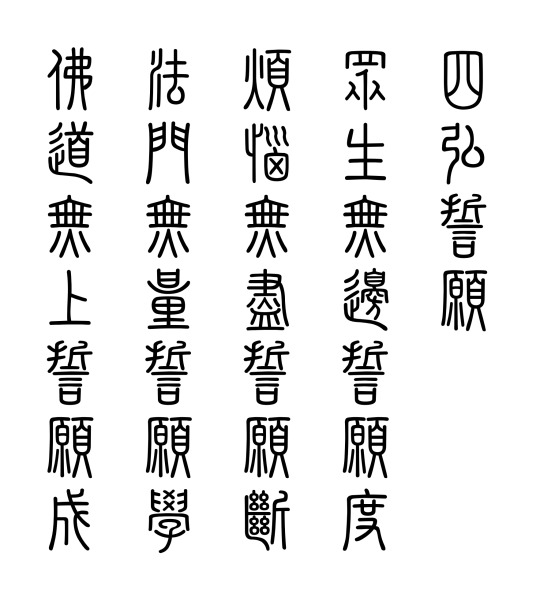
The Four Encompassing Vows
Masses of creatures, without bounds, I vow to save.
Anxiety and hate, delusive desires inexhaustible, I vow to break.
Dharma gates beyond measure, I vow to learn.
Buddha’s Way, unsurpassable, I vow to accomplish.
#bodhisattva#buddhism#mahayana#buddha#dharma#salvation#eschatology#teleology#nirvana#four noble truths#chinese#kanji#seal script
45 notes
·
View notes
Text
Coraline as a Buddhist parable
Last night while I was writing down the Four Noble Truths with a brush pen in my sketchbook (I do stuff like that sometimes), my roommate put on the movie Coraline. This was entirely coincidental but I was struck by how much the themes of the movie relate to everything I've been learning recently about the core teachings of Buddhism.
There is a concept in Buddhism called "right view." It is the first practice in the Eightfold Path. I think of this as referring to a person's understanding and perception of reality. When a person does not see the true nature of reality, they are vulnerable to illusions and delusions, which cause cravings and excessive attachments.
The Other Mother in Coraline has buttons for eyes, and she sews buttons into the eyes of other people who she lures into her illusory reality. She literally lacks "right view," and she tries to force other people to share her distorted view. She craves, and clings, and she wants other people to cling to her, so she offers them the things they crave. She controls others because she is so attached to them.
The moment when all of this hit me was at the end of the movie, when the Other Mother screams, "Don't leave me! Don't leave me! I'll die without you!"
The reason it hit me is because I suddenly saw myself in her. I think a lot of people live like this without realizing it. I am one of those people, or at least I have been. This "I'll die without you!" sentiment can be applied to any kind of addiction. The "You" could be food, it could be alcohol, it could be sex, it could be attention from others, etc. The sentiment behind the Other Mother's words can be related to any pattern of compulsive thought or behavior. But in this movie, and in my own life, that theme most often plays out in relationships with other people. Codependence is a key word to describe the pattern, at least the way I understand it.
I'm trying to develop the inner strength and acceptance of reality, to move beyond that way of existing. It is really painful to live like that. And I found myself feeling sad for the Other Mother, who is trapped in a world (resulting at least in part from her lack of "right view") where she never has enough, is never satisfied, and is never happy. Things change, and everything is impermanent, so clinging and controlling is only ever going to end in heartbreak.
There is a concept in Buddhism of the hungry ghost. They are ghosts who are stuck in a state of constant craving and dissatisfaction, and they can be extremely destructive as a result. I think that the Other Mother is a perfect, almost textbook example of a hungry ghost. I mean, she would literally consume children because she was craving their love so much.
The word "love" here is interesting to me. The cat in Coraline says that the Other Mother loves Coraline and wants to be loved in return. But the word love in this context indicates an unhealthy, all-consuming obsession, rather than mutual respect and care. A really helpful and succinct explanation is actually right in the book (which the movie is based on). Neil Gaiman writes: "It was true. The other mother loved her. But she loved Coraline as a miser loves money, or a dragon loves its gold."
Now, turning my attention to Coraline herself: I see this movie as a story about how Coraline developed "right view" after undergoing a process of reckoning with her previous approach to life. She was unable to accept reality as it was. She was unhappy, and craved a different life with different parents and different friends and different material possessions. She wanted more. And in this way, she was very like the Other Mother.
As a storytelling device, the Other Mother is useful. Characters are useful for illustrating dynamics of growth and change over the course of a narrative. But I think that ultimately, the Other Mother was inside of Coraline, and a part of her. Just as she had been a part of all the other people living in that house who were dissatisfied with their lives. She is a symbol of the attachments and cravings that all people have, taken to their extreme but logical conclusion.
In the first part of the movie, Coraline resists change. She has just moved to a new place, and she has not accepted her new reality. She has trouble connecting with the people around her, who are either overworked and exhausted (her parents), or who she barely knows at all. Because her material and social conditions are not acceptable to her, and she does not yet have "right view," she develops cravings. She lives out those cravings in the fantasy world inhabited by the Other Mother.
Sometime in the early to middle part of the movie, Coraline goes to a shop with her Mom and asks for some colorful knitted gloves. She wants them because nobody else will have them and she thinks they look pretty and interesting. Her Mom says no. This makes Coraline angry, and causes her to go even deeper into the world inhabited by the Other Mother, because that is a world in which she believes her desires can be fulfilled.
Over time, she begins to understand that the Other Mother (this dissatisfied aspect of herself) is not a good person to hang around, and that her perspective on life is warped. She begins to see the dangers of living in delusion, and clinging to sense pleasures. She becomes a firsthand witness to the instability and violence this way of living can create.
So she lets go. She lets go of her expectations, she lets go of her cravings, and instead she decides to honor her love for her parents, which is based in mutual care, rather than obsession and excessive catering to desires. It is only once she lets go of any attachment to an outcome, that she begins to receive the things she originally wanted. Love, care, attention, and even some nice physical items. Her Mom gives her the gloves she wanted as a surprise gift. But now, she is wise enough to appreciate these things for what they are. She can be happy and present in the moment, appreciating the little things while they last.
#coraline#coraline jones#buddhism#addiction#codepency#four noble truths#eightfold path#right view#other mother#hungry ghost#buddhist#attachment#craving#neil gaiman
11 notes
·
View notes
Text
Injured Buddha by Banksy

#buddha#prayer#meditation#zen#banksy#art#artist#activist#art therapy#four noble truths#middle path#moderation#buddhism#karma#dharma
42 notes
·
View notes
Text
The Eightfold Path
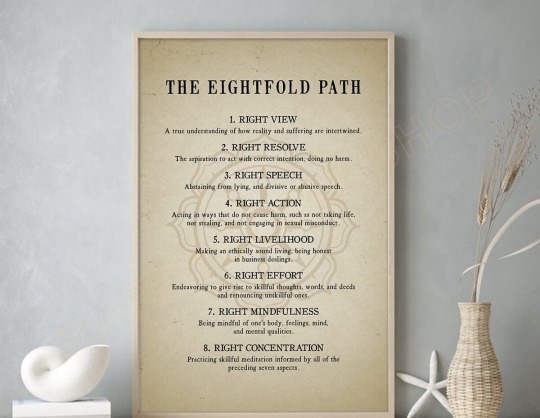
The eightfold path is the fourth Noble Truth, which is the path that the Buddha taught us leading to the cessation of suffering and the achievement of self-awakening.
Follow the path to your dreams!
~ B

2 notes
·
View notes
Photo

The Quest for Buddhism (76)
Four Noble Truths - The first Dhamma wheel turned・Part2 (1. Duhkha)
2) Samudaya
Samudaya satya is the 2nd of the Four Noble Truths (Ref) , and it is the concept that the cause of suffering is the love attachment.
It is the truth that the endlessness of desire gives rise to suffering, that is, the truth that 'suffering has a cause'. The truth of the arising of suffering. It refers to the source of suffering, the Kleshas (worldly desires) that cause the manifestation of suffering, and is therefore also called "duhkha samadhya satya" The word 'samudaya' means 'to invite and collect', and it is said that the things that invite and collect suffering are the worldly desires.
Specifically, it refers to the mind's defilements such as greed, anger and complaining, and its root, craving (Skt. trishna). These are the impulsive emotions that lead to the unceasing pursuit of desires.
In Buddhism, the 12 links of conditioned arising (Skt. Pratityasamutpada Ref2) show and represent the structure of the causes of suffering. It shows the twelve causes of suffering and their edges. Suffering is a system of the 12 causes (Ref3 &Ref4), and when the 12 are gathered together, the whole of it is suffering. Therefore, both avidya and craving are the root causes of suffering, and are the "duhkha samadhya satya" (suffering and collection).
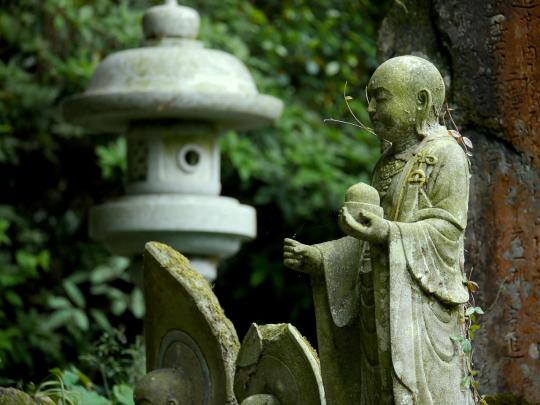
仏教の探求 (76)
四諦 (したい、梵: チャトゥル・アーリヤ・サティヤ) 〜 最初に回されたダンマの輪・その2(①苦諦)
②集諦 (じったい)
集諦 (じったい、梵: サムダヤ・サティヤ)とは、四諦 (したい、梵: チャトゥル・アーリヤ・サティヤ 参照)の第二であり、苦の原因は愛執の念であるという概念である。
それは、欲望の尽きないことが苦を生起させているという真理、つまり「苦には原因がある」という真理。苦しみの生起の真理。苦しみの源、苦しみを現出させる煩悩(梵:クレーシャ)を指すので、苦集諦 (くじゅうたい、梵: ドゥッカ・サムダヤ・サティヤ)ともいわれる。集 (じゅう、梵: サムダヤ)とは「招き集める」という意味で、苦を招き集めるものは煩悩であるとされる。
具体的には貪欲や瞋恚(しんに)、愚痴などの心のけがれをいい、その根本である渇愛(かつあい, トリシュナー)をいう。これらは、欲望を求めてやまない衝動的感情をいう。
仏教において苦の原因の構造を示して表しているのは、十二縁起(参照2)である。十二縁起とは、苦しみの12の原因(参照3&参照4))とその縁を示している。苦は12の原因のシステムであって、12個集まってそれ全体が苦なのである。だから、無明(むみょう)も渇愛(かつあい)も、苦しみの根本原因であり、苦集諦(くじゅうたい)である。
#samudaya#satya#four noble truths#pratityasamutpada#12 causal branches#trishna#craving#avidya#suffering#origin of suffering#buddhism#nature#philosophy#art
89 notes
·
View notes
Text
Happy Bodhi Day!
As a Buddhist, I find deep significance in celebrating Bodhi Day, a revered observance that commemorates the enlightenment of Siddhartha Gautama, who later became known as the Buddha. Bodhi Day, typically held on December 8th in many Buddhist traditions, marks the pivotal moment when the Buddha attained supreme awakening under the Bodhi tree.
Buddha’s Bodhi – image taken from Internet
This…

View On WordPress
#Bodhi#Bodhi Day#Buddha#Buddha enlightenment#Buddhism#compassion#cultivating love and wisdom#Dharma#enlightenment#Four Noble Truths#generosity#inner transformation#love#Noble Eightfold Path#Raffaello Palandri#Raffaello Palandri Buddhist Master#reflection#Sangha#spiritual growth#understanding#wisdom
5 notes
·
View notes
Text
Im
So
Hungry
I
Could
Eat
#erika jayne’s face & body transformation over the years: with $40k a month on beauty & the truth behind her weight loss#four noble truths
2 notes
·
View notes
Text
youtube
#spiritualhealing#spiritual health#mindfulness#beautiful soul#lord budha enlightment#eightfold path#eightfoldjourney#four noble truths#shaolin#Youtube
3 notes
·
View notes
Text
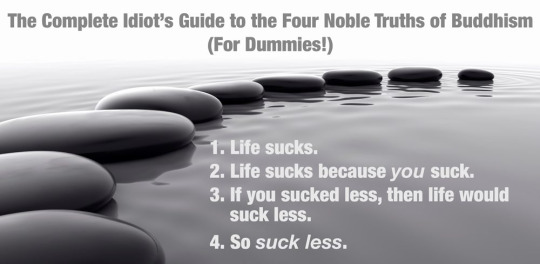
Funny and not really that far off from the real 4 Noble Truths, which are…
There is suffering in life
This suffering arises due to our craving and attachment
The way to end suffering is to end craving and attachment
The way to end craving and attachment is the Noble Eightfold Path.
43 notes
·
View notes
Text
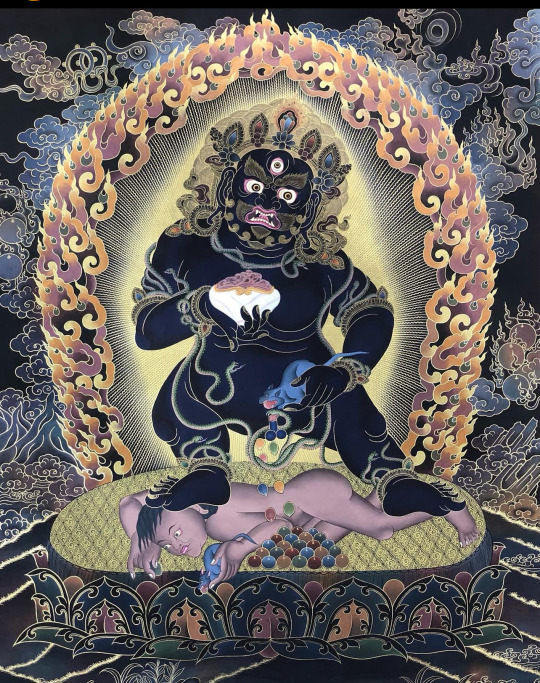
Zambhala has a type of enlightened energy that purifies misery Karma. Zambhala helps one to collect the merit in order to achieve that and purify the demerit that stops you from achieving that.
If one practice Zambhala practice correctly one become less miserly, less greedy, less selfish.
#buddha#buddhist#buddhism#dharma#sangha#mahayana#zen#milarepa#tibetan buddhism#thich nhat hanh#dakini#dzogchen#amitabha#four noble truths#Padmasambhava#Guru Rinpoche#manjushri#Dzambala
27 notes
·
View notes
Photo
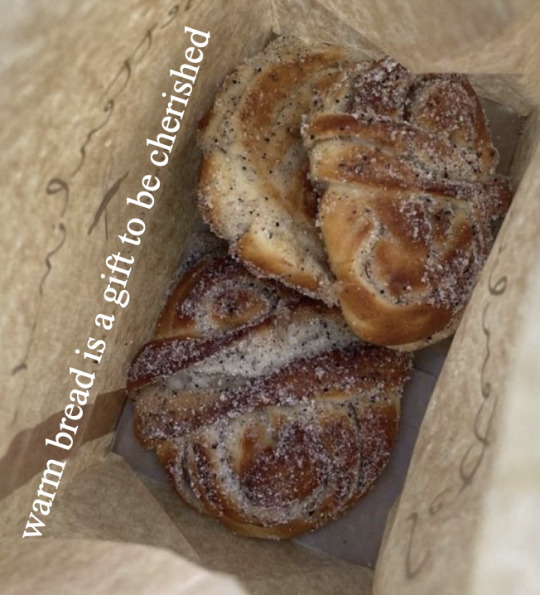
10 notes
·
View notes
Text
The Four Noble Truths
Often considered the Buddha's first teachings, the Four Noble Truths are the foundation of Buddhism.
The existence of dukkha (suffering) in the realm of samsara (means both "world" as well as "the cycle of death and rebirth").
The origin of suffering (dukkha) is taṇhā (craving, desire, attachment, or greed).
There is an end to suffering. Nirodha (cessation or ending) of dukkha can be accomplished by letting go of or confining attachment (taṇhā).
Magga (The Noble Eightfold Path) is a way of confining taṇhā and therefore releasing dukkha. The next post will cover The Noble Eightfold Path in great detail.
To summarize, unchecked sensory contact gives rise to dukkha, craving, or clinging to impermanent states and things. Most cravings cannot be satisfied or attachments are impermanent, and this causes pain or suffering. This craving leaves us trapped in samsara, the endless cycle of rebirth and wanting, leading to further dukkha. Following the Noble Eightfold Path, meditation (dhyana), and practicing mindfulness can help us confine our automatic sensory responses, and ultimately help to reach nirvana, the cessation of craving and ending the cycle of rebirth that brings about dukkha.
#buddhism#buddha#religion#spirituality#meditation#four noble truths#culture#nirvana#samsara#dukkha#magga#nirodha#tanha
18 notes
·
View notes
Text
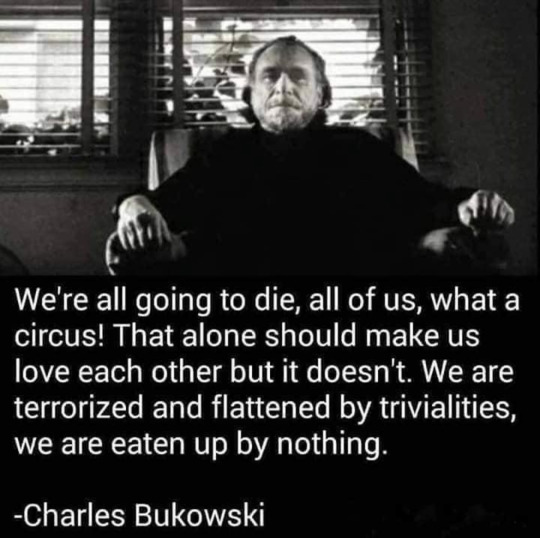
Those who seek happiness in pleasure, wealth, glory, power, and heroics are as naive as the child who tries to catch a rainbow and wear it as a coat.
~ Dilgo Khyentse Rinpoche
#Dilgo Khyentse Rinpoche#Padmasambhava#Guru Rinpoche#buddha#buddhist#buddhism#dharma#sangha#mahayana#zen#milarepa#tibetan buddhism#thich nhat hanh#four noble truths#manjushri#amitaba buddha#avalokitesvara#green tara#tantric#vajrasattva#vajrapani#rainbow body#bodhisattva#buddha samantabhadra
39 notes
·
View notes
Text
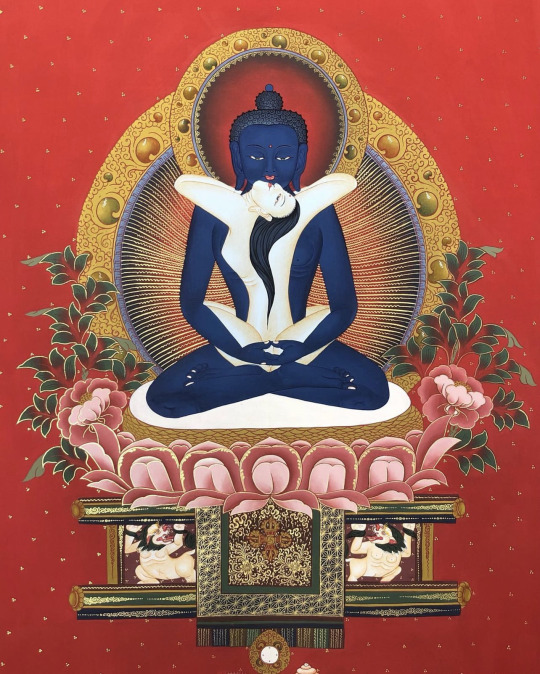
Kuntu Zangpo is the Primordial Buddha. The name Kuntu Zangpo means "that which is most excellent and present in all places." Thus our ancient texts refer to Kuntu Zangpo as being "Self-Awareness", "True Self" and
"Source of the Self".
This Primordial Buddha has never had to attain enlightenment and liberation from Samsara because He has been fully and perfectly enlightened from the very beginning.
He has never even entered into the delusions of Samsara in the first place. He has nothing to attain or realize; He simply is what He is from the very beginning and never otherwise.
#buddha#buddhist#buddhism#dharma#sangha#mahayana#zen#milarepa#tibetan buddhism#thich nhat hanh#green tara#four noble truths#padmasambhava#amitaba buddha#Avalokiteshvara#Shantideva#Dakini#Dzogchen#dalai lama#Guru Rinpoche#Dilgo Khyentse Rinpoche#vajrasattva#vajrapani#bodhisattva#merit#medicine buddha#manjushri#mindfulness#meditation#mind training
76 notes
·
View notes